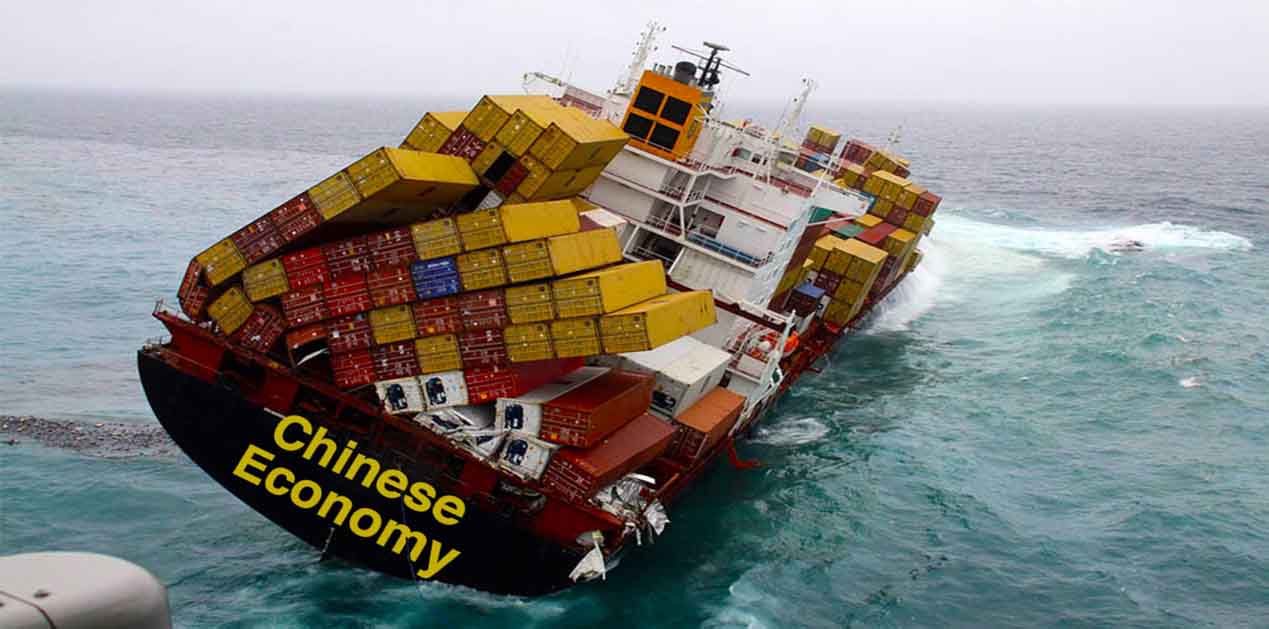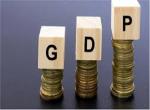Since the 2000’s, predicting the timeline on collapse of Chinese economy has been a prominent theme among economists. However, the Chinese economy has proved all naysayers wrong by being resilient, and now joining the ten trillion dollars Gross Domestic Product (GDP) club. Ironically, the delay in the prophesied bubble burst can be credited to the rise of private sector in the socialist country that ensured better resource allocation. Yet, China’s modern economic journey is paved with many troubles.
From its vulnerabilities to US Federal Reserve rate hikes to expanding local government debts, China’s financial liabilities get even more complicated with the growing reach of its shadow banking sector that is beyond watch of its regulatory authorities. In such a scenario to undertake mammoth expenses of Belt and Road Initiative (BRI), a China-style Marshall Plan may be non-pragmatic. Funding of BRI is essentially China-led with about $500 billion1 worth of BRI projects (both domestic and international) up to 2016 and expected to reach $4-8 trillion in entirety. Unlike the US’ Marshall Plan that covered largely one geopolitical entity, China’s BRI encompasses more than seven geopolitical regions of Asia, Africa, Eurasia and Oceania.
BRI is conceived on the premise of utilizing China’s excess capacities, while at the same time securing China’s energy and resource needs and markets for the future. Years of rapid economic growth with a devalued currency has led to large industrial over capacity and huge surplus savings, coupled with inefficient capital allocation and lagging regulatory oversight. Even though China’s external debt stands at about 13 per cent of GDP, China already has an estimated 270 per cent debt-to-GDP ratio (2016 stats). The liabilities of State-owned enterprises are estimated at about 115 per cent of GDP, which could undermine the country’s fiscal sustainability, especially in the wake of a rising fiscal deficit2. Also over the last decade, China has simultaneously been plagued by ‘hot money’ (short-term speculative investments) and large domestic capital flight with an estimated $3.8 trillion in capital loss3. To cool the rapidly heating economy, China aims to transition from investment-driven to a productivity and consumption driven economy. It understands that to avoid middle-income trap, China needs to move to higher technology and upstream sectors as other developing countries catch up reducing China’s competitive advantages in cost. Today, services (50.2 per cent) comprise a larger share of China’s GDP than industry (40.2 per cent)4.
Thus, being capital, labor and technology intensive industry, infrastructure development in China and other countries offers the perfect platform for resolving China’s current pressing challenges. However, China’s growth has come at such a rapid pace that in less than three decades of rapid growth in the modern era it has come to reclaim its place as the world’s second largest economy, like two centuries earlier when it was the world’s largest economy. China created 139 per cent of GDP in new credit between the first quarter of 2009 and the third quarter of 2014. This is concerning when one looks at similar rapid credit expansion in the US and Japan that were followed by financial crises. US created 58 per cent of GDP from 2002-07 and faced the subprime mortgage crisis soon thereafter. Japan created credit equivalent to the entire size of its economy from 1985-90 and subsequently experienced more than 20 years of deflation - prolonged by lack of much needed structural reforms and declining demography5. In September 2016, a report from the Bank for International Settlements (BIS) had stated that China was within three years of a serious financial crisis6. Thus, rapid economic growth in China serves both to advance and postpone the inevitable financial burst as credit expansion creates security for large bailouts while deteriorating investment quality at the same time.
BRI’s priorities listed on the Belt & Road Portal mention Policy Coordination, Facilities Connectivity, Unimpeded Trade, Financial Integration and People-to-People bond. In May 2017, a United Nations Economic and Social Commission for Asia and the Pacific Study (UNESCAP) warned of financial risks in countries in south and central Asia where China's announced investment value under BRI is high compared to the relative size of the economy of the recipient country. The report states that “… at a broad level, relatively easy access to large foreign loans for infrastructure projects, even if most of them tend to be on a concessional basis, could undermine macroeconomic stability in small economies with underdeveloped financial markets and less effective debt management ability7”. The $15 billion China-Uzbekistan investment deal signed in late 2013 is roughly equivalent to a quarter of Uzbekistan's GDP. Similarly, the $37 billion China-Kazakhstan cooperation agreement signed in late 2014 and early 2015 and the $46 billion China-Pakistan agreement in April 2015 each represent over a fifth of GDP level in Kazakhstan and Pakistan, according to the UN study. China's commitment to Pakistan has now reached $ 62 billion. Similarly, the $24 billion China-Bangladesh agreement in October 2016 is equivalent to almost 20 percent of Bangladesh's GDP8. China may be primarily interested in redirecting its excess capital, but if they do not generate the expected revenues, the BRI loans will leave bad assets that will clog the already overburdened Chinese financial system.
Infrastructure needs ‘network effects’ to generate revenue through interlinking mechanisms with existing infrastructure that will allow more people to able to utilize it. This precipitates a need for policy coordination. However, in BRI’s case China may be relying too much on incentive caused bias while disregarding actual geopolitics. Incentives influence the way people act, based on how they’re rewarded. Incentive-Caused Bias is used to explain why people with a vested interest in something will tend to guide the outcome in the direction of their interest. With increasing pressure on governments to ramp up growth rates or build massive (public) infrastructure, China expects that the states owing to monetary incentives or cheap loans will naturally coordinate their policies with that of China. At the individual and institutional level an outright reward may directly be able to influence behavior, but at a country level it may not work out smoothly as a multitude of factors are in play. Planning Fallacy is inherent in all human planning as all initial planning will almost certainly be incomplete or inaccurate in a few important respects. Thus, there are possibilities for China suffering from a confirmation bias or the general tendency for people to pay attention to information that support their conclusion and ignore information that doesn’t.
In conclusion, Chinese leadership is more than aware of the above mentioned lurking dangers. In recent time, China has received warning from nearly all major international financial institutions. It has also faced a ratings downgrade from Standard & Poor and Moody’s Investor Service. In April earlier this year President Xi Jinping had chaired a gathering to discuss “safeguarding national financial-market security”, a day after the worst losses this year in Shanghai-traded shares. While the central bank governor and the various regulators were also there, the fact the Communist Party’s premier decision-making body, the Politburo, met and decided to act on financial risk suggests there’s acceptance of the risks at the very top9. On 18 August 2017, China’s State Council also published a set of investment guidelines to clamp down on the “irrational” or “non-genuine” investments in BRI. Since the BRI was proposed in 2013, an until June this year, Sinosure, a state owned insurance enterprise has paid a total compensation of $1.73 billion to enterprises and banks10. This may be an understated figure considering many flagship BRI projects have failed to materialize the expected revenue. The dramatic Venezuelan economic collapse despite being a rich country, and not coincidentally, a strong beneficiary of Chinese finances, bears strong parallels to the future for Pakistan and China Pakistan Economic Corridor11. Thus, whether the Chinese regulators will be able to reign in financial hazards of the Belt and Road Initiative is over for the jury to decide.
Endnotes
1. Pricewater Coopers: China and Belt & Road Infrastructure, 2016 review and outlook, February 2017, https://www.pwchk.com/en/consulting/br-watch-infrastructure.pdf
2. Economic and Social Survey of Asia and the Pacific 2017: Governance and Fiscal Management, Chapter 2. Perspectives from Sub-regions, http://www.unescap.org/sites/default/files/Chapter2-Survey2017.pdf
3. Forbes: Why China Lost About $3.8 Trillion To Capital Flight In The Last Decade, February 22, 2017, https://www.forbes.com/sites/insideasia/2017/02/22/china-capital-flight-migration/#74693ef34a37
4. National Bureau of Statistics of China: Composition of GDP, http://www.stats.gov.cn/tjsj/ndsj/2016/html/0302EN.jpg
5. South China Morning Post: China’s credit excess is unlike anything the world has ever seen, April 21, 2017, http://www.scmp.com/business/global-economy/article/2089577/can-worlds-largest-credit-excess-be-unwound-luckily-beijing
6. Reuters: BIS warns China banks risk crisis within three years, September 19, 2016, https://www.reuters.com/article/us-china-banking/bis-warns-china-banks-risk-crisis-within-three-years-idUSKCN11P07R
7. Economic and Social Survey of Asia and the Pacific 2017, Governance and Fiscal Management, Pg. 68 http://www.unescap.org/sites/default/files/publications/Survey%202017-Final.pdf
8. Economic Times: UN warns about financial risks in China’s One Belt One Road project, May 25, 2017, https://economictimes.indiatimes.com/news/defence/un-warns-about-financial-risks-in-chinas-one-belt-one-road-project/articleshow/58831087.cms
9. Bloomberg: How China Is Tackling Dangers in Its Financial System, October 10, 2017 https://www.bloomberg.com/news/articles/2017-10-09/how-china-is-getting-serious-about-financial-risk-quicktake-q-a
10. China's insurance industry invests RMB700 bln for B&R construction, August 21, 2017, https://eng.yidaiyilu.gov.cn/home/rolling/24203.htm
11. Bloomberg: Is Pakistan China's Venezuela?, November 27, 2017, https://www.bloomberg.com/gadfly/articles/2017-11-27/is-pakistan-china-s-venezuela
(Views expressed are of the author and do not necessarily reflect the views of the VIF)
Image Source: https://i.ytimg.com/vi/GrpAZ5qHSlU/maxresdefault.jpg










Post new comment